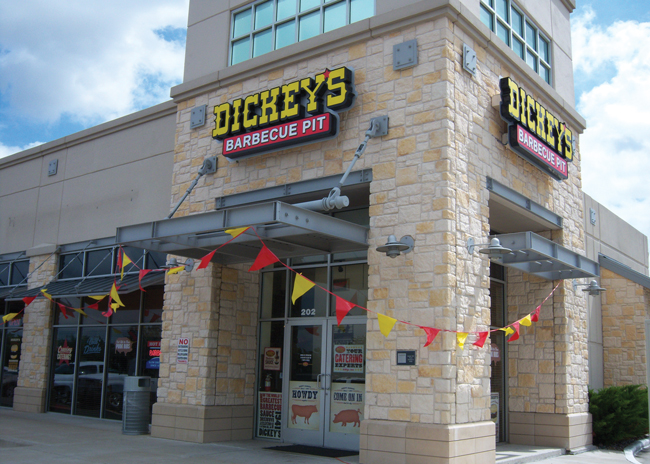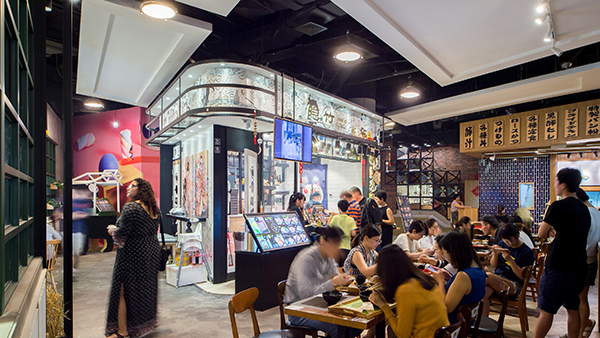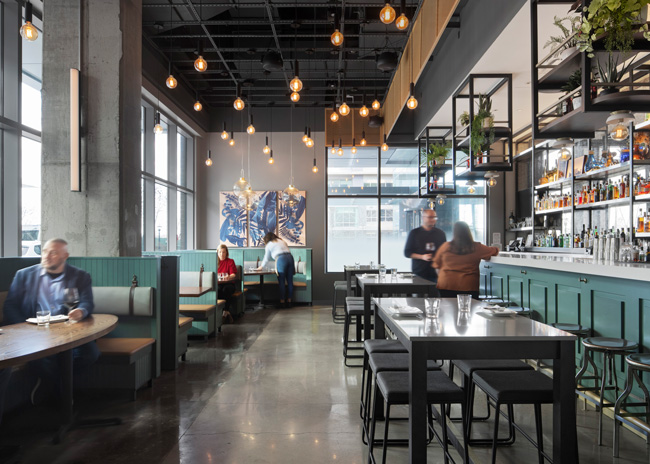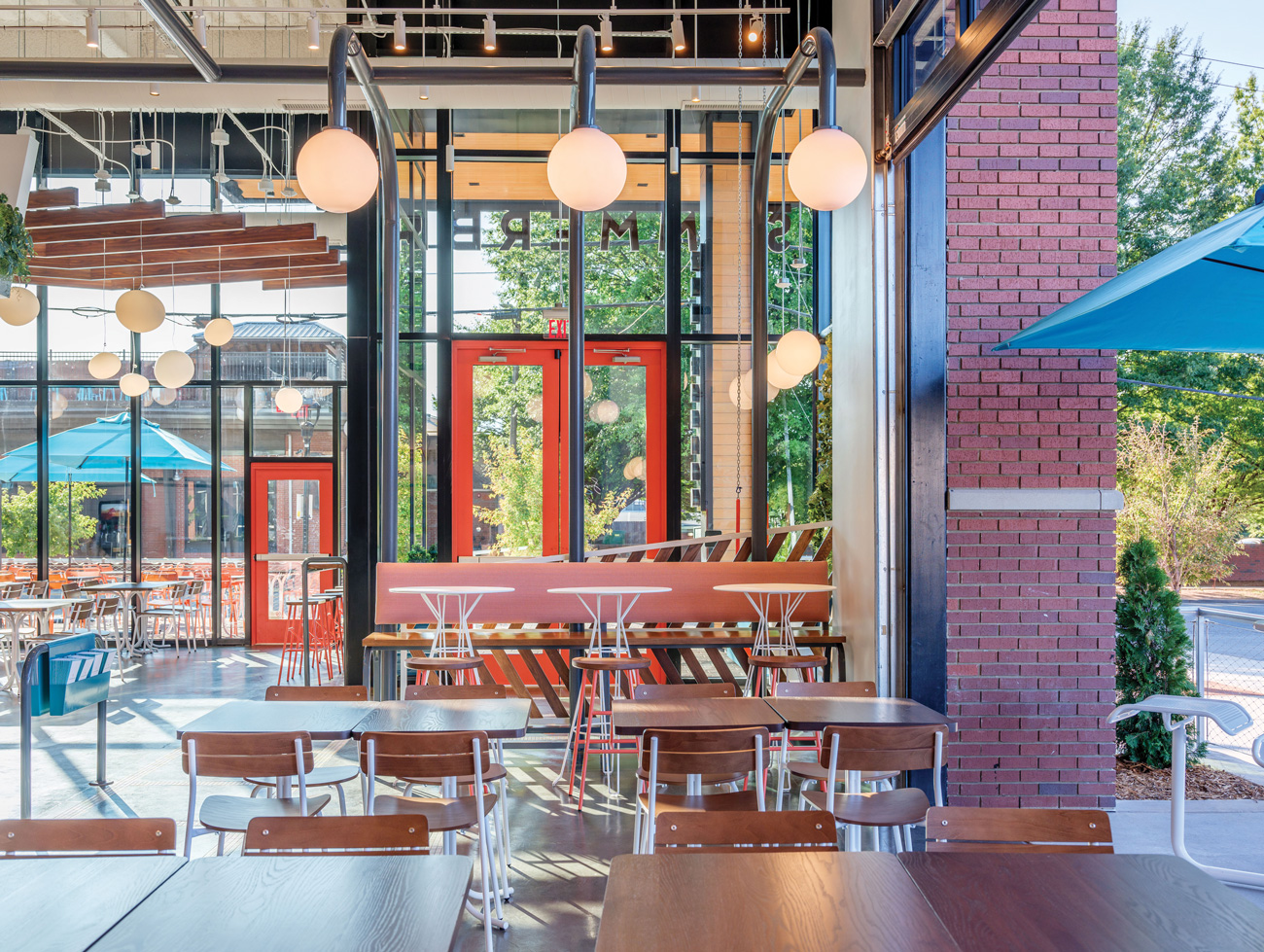Most Popular with Readers
From concept trends and construction challenges to leadership insights, how-to advice and, of course, award-winning restaurant designs, rd+d has covered it all and more over the past decade. Here’s a look at some of the stories that drew the greatest interest, at least in terms of clicks on rddmag.com, with our readers through the years.
2012: Development Q&A with Dickey’s Barbecue Pit
Talk about a hot concept. Back in the fall of 2012, when rd+d tapped Richard Phillips, then-VP of Development at Dickey’s Barbecue Pit to discuss Dickey’s development efforts, the chain expected to close out the year with 250 units. Since then, family-owned Dickey’s has grown to become an international, omnichannel franchise organization with nearly 600 units, three virtual brand extensions (Wing Boss, Big Deal Burger, Trailer Birds), e-commerce, meal kits and a thriving branded retail products business.
Sharp insight: Having helped Dickey’s gain strong franchise sales momentum coming out of 2008’s Great Recession, Phillips shared some insights that could resonate in today’s post-pandemic environment:
“This has actually been a good growth environment for us. In tough economic times people are generally more willing and eager to invest in themselves. Many of our franchise owners were at a point in their lives where maybe they had a corporate job or maybe they’ve even been a restaurant manager and were able to save some money. Our marketing as far as franchising sales goes is not geared toward big investment groups and people with millions of dollars. We’re more interested in having people who are willing to invest in themselves and get in and own a restaurant. That, combined with the fact that we’re predominately focused on low-cost conversions, has enabled us to grow quickly.”
 A Q&A with Dickey’s Barbecue Pit’s then-VP of Franchise Development Richard Phillips was the most popular article on rddmag.com in 2012. Image courtesy of Dickey’s Barbecue Pit
A Q&A with Dickey’s Barbecue Pit’s then-VP of Franchise Development Richard Phillips was the most popular article on rddmag.com in 2012. Image courtesy of Dickey’s Barbecue Pit
2015: Zaxby’s Hatches New Prototype
New prototypes are always a subject of interest to rd+d readers, and fast-growing chicken QSR Zaxby’s made a splash in 2015 with its new look. Mirroring a classic red Southern barn on the exterior, complete with distressed brick façade and galvanized tin awnings, interiors were designed to be comfortable, cozy and inviting. Key elements included a mix of seating to appeal to diverse customer groups, warm earth tones, red-washed and exposed brick walls, open wood-beam ceilings, tiled floors resembling wooden planks, Edison bulb lamps and galvanized tin accents to create a farmhouse vibe.
Sharp foresight: Significant ahead-of-the-curve operational enhancements were incorporated. Top among them: a new dual-sided, full cooking and prep suite down the center line of the kitchen, enabling drive-thru prep on one side and in-store dining prep on the other. Such enhancements enabled Zaxby’s to weather the pandemic well and the chain has since kept strong focus on building drive-thru sales. Amy Pritchett, vice president of franchise sales, told rd+d last June that Zaxby’s quick pivot to drive-thru, delivery and curbside pickup was critical to its success over the past couple of years and that the chain is developing another new building prototype focused on drive-thru and delivery.
2017: 10 Kitchen Design Best Practices
There’s a lot to consider when it comes to back-of-house design. This feature laid out kitchen design best practices from start to finish, tapping the expertise of leading design consultants. The topic was also spun off to be one rd+d’s most popular webcasts (still available on-demand to all at rddmag.com/webcasts).
The (brief) bottom line: Define the concept; select the menu; estimate food production needs for projected customer counts; determine service style; select equipment and determine space required for it to function properly; determine staffing requirements; identify utility specs and related space constraints; don’t be stingy with storage space; maximize cold prep space; and designate space for hot bulk prep.
 Zaxby’s 2015 prototype offered significant operational enhancements including a new dual-sided, full cooking and prep suite and a complete interior package overhaul.
Zaxby’s 2015 prototype offered significant operational enhancements including a new dual-sided, full cooking and prep suite and a complete interior package overhaul.
2020: Designing Restaurants in a Post-Pandemic World
In what was nothing short of an apocalyptic year, it’s no surprise that readers in 2020 gravitated to content designed to help them pivot, survive and even thrive under challenging pandemic-induced circumstances. Topics like curbside, drive-thru, third-party delivery, meal kits, contactless transactions, air purification, outdoor dining, plexiglass, ghost kitchens and their collective implications for design quickly rose to the top as immediate priorities shifted.
Among the post-pandemic operational priorities suggested: double make lines and pick-up stations; separate entrances for mobile-order pick-up and dine-in guests; integrated, contactless ordering and digital real estate; highly visible safety and sanitation measures; downsized dine-in; ghost kitchens and virtual brands.
Futuristic insights: While this story appeared early in the pandemic (May/June 2020) designers also shared thoughts on future design implications based on what was happening at the time. A sampling:
- “It doesn’t functionally make sense to make BOH spaces bigger in the sense of social distancing. For example, an extra two steps for a line cook can really harm speed
and efficiency.” —Griz Dwight, GrizForm Design Architects - “We’ll be taking a closer look at the functional aspect of air purification systems, as well as materials and coatings that reduce surface transmission of bacteria and viruses — all of which will become more important.” —Dwayne MacEwen, DMAC Architecture
- “I don’t believe this life is the new normal in the long term. Restaurants won’t necessarily have to rethink how they design to take social distancing into consideration — in fact, quite the opposite. Their protocol will likely be ‘we’re back in action; we need to repack the place with customers and celebrate our inherent yearning for gathering, eating, laughing and socializing.’” —Dave Shove-Brown, //3877
- “This has forced restaurants to expand that market (carryout and delivery) and will lead to design changes — things as simple as building a safe and efficient side entrance, increasing the number of parking stall locations for curbside pickup and implementing double drive-thru lines.” —Matthew Mabie, Knoebel Construction, Inc.



